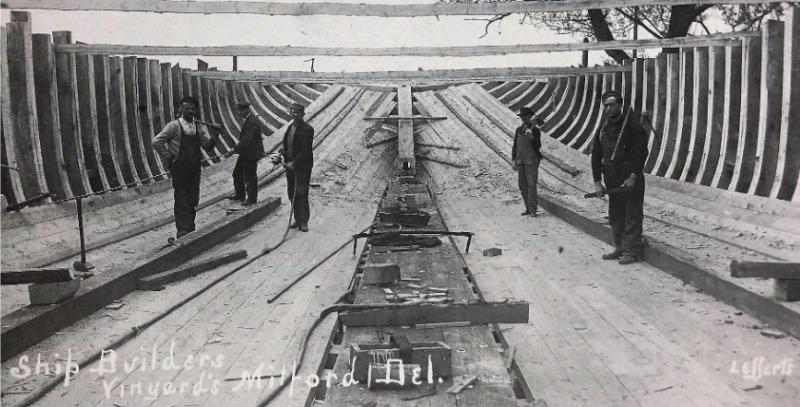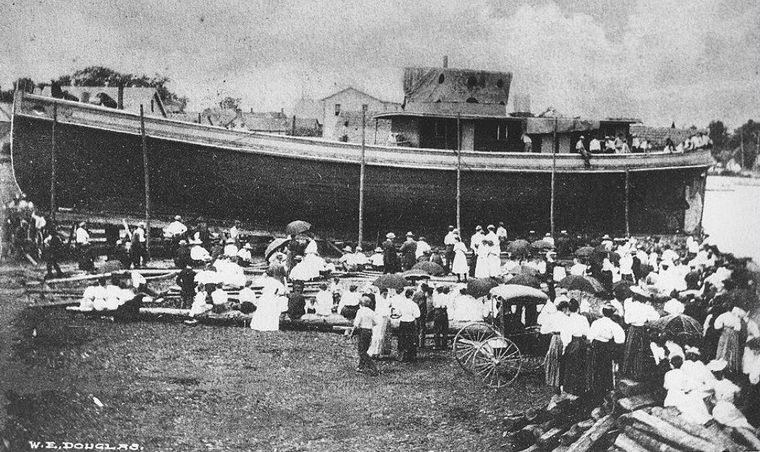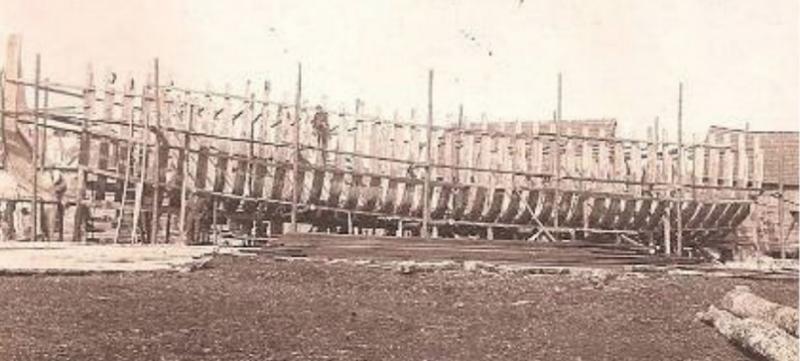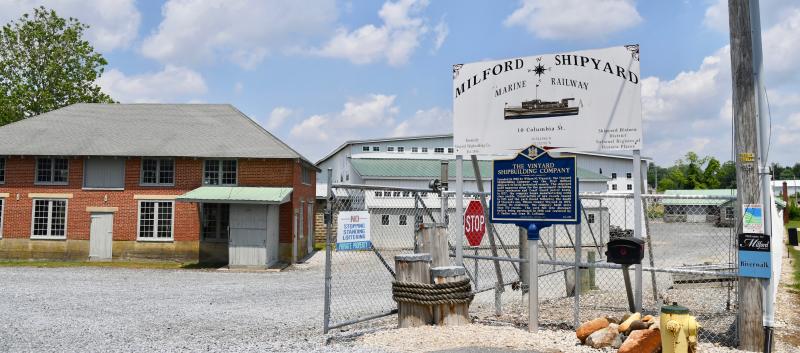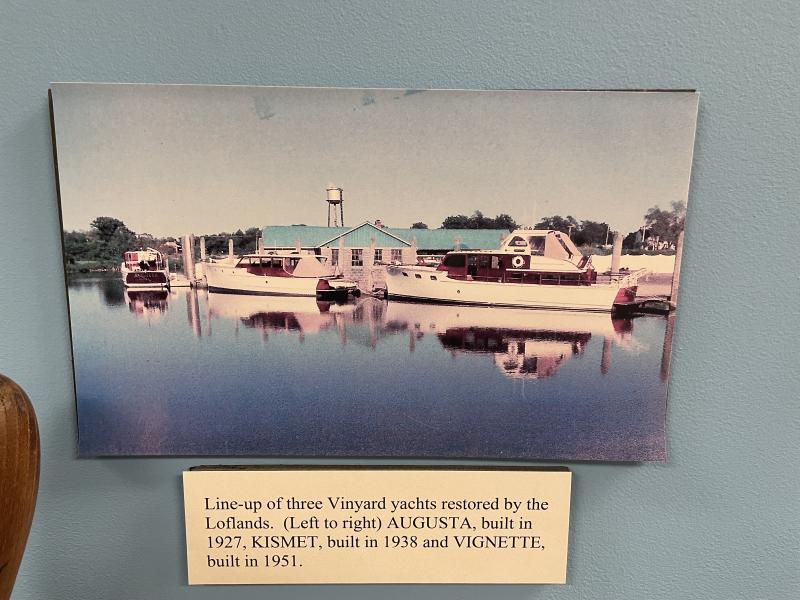Shipbuilding in Sussex was really big business
What do the Mispillion, Broadkill and Nanticoke rivers and Broad Creek have in common, except being waterways in Sussex County?
They were all sites of shipbuilding enterprises in the 19th century and early 20th century.
Shipyards in Milton, Milford, Seaford, Laurel and Bethel were mainstays of the small towns’ economies, and by best estimates, about 1,000 wooden ships were built during a 50-year period.
After several months of building, a ship launching was a major event in small towns. Schools and businesses were closed as nearly everyone gathered on launch day.
So why Sussex County? An abundance of white oak forests and easy access to major waterways, including the Chesapeake and Delaware bays, were the major factors.
You would be hard-pressed to find any remnants of this industry that once thrived, except in one location. Thanks to the Lofland family, the site of the Vinyard Shipyard along the Mispillion River in downtown Milford has been preserved. The rest are marked with historic signs and markers.
The industry flourished until transportation modes began to change throughout the country in the late 19th century, including steam-powered ships, trains and automobiles. Some shipyards were able to adapt to the changes, but most did not.
In Bethel, along Broad Creek, which is a tributary of the Nanticoke River that empties into Chesapeake Bay, many different types of ships were built, but sailing rams were unique to the small town. They were highly sought after by Chesapeake Bay watermen because of their flat hulls.
About 40 vessels were constructed in Bethel up until 1918, according to author James Marvil in his book, “Sailing Rams: A History of Sailing Ships Built in and near Sussex County, Delaware.”
Only one sailing ram, Victory Chimes, is still afloat. Built in 1900 by the George K. Phillips Co., the ram was originally named Edwin and Maude. Homeported in Rockport, Maine, the restored Victory Chimes is a U.S. National Historic Landmark and is honored by being cast on the back of the state's quarter. Trips aboard the historic ship are offered during the summer season.
Twenty-six rams ranging from 113 to 163 feet in length were built in Bethel and Sharptown, Md., and they were used to haul cargo – usually lumber and grain – on the Chesapeake Bay.
The Lewisville Railway (Bethel's original name) was built in 1869 to help launch ships.
Bethel's history centered around shipbuilding, and many captains and artisans made their homes there. They built their houses – including picket fences – with the same eye for detail. Some of the houses still exist, and have been lived in and cared for more than a century. The Bethel Maritime Museum, located on First Street, keeps those shipbuilding memories alive.
Along the Nanticoke River in Seaford, shipbuilding took place for 120 years, from 1830 to 1950. The river was a vital part of the economy with canneries and freight and passenger ships from Baltimore and beyond.
The Seaford Marine Railway Co. was the largest shipyard in the area where ships and boats were constructed through the World War II era. During the war, the company built barges and Higgins boats used for beach landings.
In Milton, shipbuilding dates back to at least 1737. The town's ship crafters were well known for their river and bay open boats. Hulls were also made for ships in other shipyards. According to Milton Historical Society research, the first vessel launched in Milton was the shallop Broad Kill in 1737.
Getting the ships from Milford to Delaware Bay was an ordeal. The ships had to be hauled along the river only during high tides, which could take weeks. Many times, masts and rigging were added once a ship was in the bay.
The last ship from the Milton boat yard was the motorized Wild Cat in 1915.
Once launched, ships navigated the curvy Broadkill River to Delaware Bay.
In Milford, ships were built from 1760 to 1951. During the peak of the industry at the end of the 19th century, there were seven shipyards, employing three-quarters of the town's workforce. After 1951, the Vinyard Shipyard location continued to provide boat repairs until 1973. Wilson Vinyard opened the shipyard in 1896.
Early on, sailing vessels and tugboats were constructed at the Vinyard site. During the World War I years, ships – called Sixbiters – were built for the U.S. Navy. In the 1920s, the shipyards provided boats for the U.S. Coast Guard that were used to patrol for rum runners during Prohibition.
Then in World War II, the Milford shipyard was called to military service again and built 14 wooden sub chasers for the Navy. They were highly effective because German submarines could not detect the wooden hulls of the boats.
From 1927 to 1951, luxury yachts for the some of the nation's well-to-do were constructed at Vinyard. The actual Vinyard yard closed after World War II and reopened in the 1960s under the name Delaware Marine and Manufacturing.
As the shipyards began to be torn down, the Vinyard Shipyard remained and fell into a state of disrepair. Joan and Sudler Lofland purchased the 2.75-acre site in 1996 and began a restoration effort. They even built their home on the site along the Mispillion River and added a museum.
More than 300 wooden boats were constructed at the Vinyard Shipyard, the most of any Delaware shipyard.
